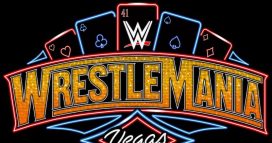Phillies
WE’RE ALL MANAGEMENT NOW
When I was six I got a Strat-O-Matic baseball game for my birthday. This was 1972 and, my luck, the one I received came with a starter set of 1971 Expos cards. Imagine the fevered delight of any six-year-old when he discovers he’ll have the thrill of managing from his basement the likes of Boots Day and John Boccabella for the foreseeable future.
I can’t remember who the other team was that accompanied the Montreal cards; all I can recall is sitting in my basement watching these Expos strike out, pop out, and ground out with stunning alacrity. In the real world, the Phillies were sending to the plate the likes of Denny Doyle, John Bateman, and Roger Freed so from where I sat, my Strat-O-Matic experience was alarmingly true-to-life. This was baseball, I thought. Real baseball. And I was not merely playing it but orchestrating it.
Just as in real baseball, Strat-O-Matic offered insight if you took the time to look hard enough. Those ’71 Expos were terrible but the more I played the more I saw the value of a player like Ron Fairly. Rusty Staub was the unquestioned star of that club but Fairly’s card was fantastic; he seemed to get on base all the time and was maybe the toughest out in their lineup. Ron Hunt was another player I learned to appreciate through his Strat-O-Matic card. Soon I was batting them first and second every game even though the real-world Expos not only moved them around the order but sometimes didn’t play them at all. Idiots, I’d say to myself. I know better.
Strat-O-Matic begat Statis-Pro Baseball (where I discovered the deceptive magic of Paul O’Neill years before the Yankees would), which begat Rotisserie Baseball, which begat the sabermetric boom that we’re presently in the midst of. In the process we’re all more in the know now than we have ever been before. In short, we’re all management now, or at least we think we are.
In the old days, when ballclubs traveled by train and sportswriters wrote breathlessly about them, we like to think that players were mythologized beyond belief – “godded-up” as critics of that era describe how they were written about. And they were. But along with that came a perspective that was clearly in management’s camp. The writers of that era were working on the owners’ dole and weren’t about to do anything to screw that up. So fans were offered a sweetened-up version of the game; one that gave them their heroes but also beat home the idea that these heroes were lucky to be there and ought not to rock the boat. Fans, seeing the game through the eyes of management as conveyed to them by the sportswriters they read every morning, understood this implicitly. In the process, the Yankees won seemingly every year, a few other teams tried, most didn’t, but everybody ended up comfortably in the black each October.
That perspective starting changing in the ‘60s, such that by the ‘70s and ‘80s fans were identifying more with the players than the people who paid them. The owners were exploiting them no matter how much money this one or that one made, the players were the game, and the best ones were worth whatever it cost, were the budding narratives. It’s no surprise that as this mindset emerged, the Players Association grew stronger and more powerful. And in the process, baseball became more competitive. Heroes may have become passé but stars ruled and in this star-laden era, a wider swath of clubs participated in a World Series than ever before. And along the way clubs made more money than ever, although they were forced to spend more in order to do so.
Games like Strat-O-Matic and Statis Pro pushed back against the rising player-centered narrative, albeit inadvertently. And fantasy baseball and sabermetrics crushed it into the dirt. Today we’re back, if not quite where we started – baseball gods reside only in heaven nowadays – but pretty damn close. Once again we see the game through management’s eyes, tinkering with our rosters here, looking for underappreciated value there, mixing this with that to see what might happen. The players exist primarily as assets or liabilities; widgets of one sort or another, to be plugged in here or there, or nowhere if we might save a dollar or two in the process.
Which explains why players such as Mookie Betts, Kris Bryant, and Francisco Lindor are on the trading block right now. All of these players are popular in their home cities, in the prime of their careers – 26 or 27 years of age – and on clubs seemingly built to contend next season. Yet they very well might be moved. Forty years ago fans in Boston, Chicago and Cleveland would be screaming bloody murder. Today they calmly talk about “acquiring assets,” “cost certainty,” and “maintaining payroll flexibility” in giving management not merely a pass but a hearty pat on the back for reducing the likelihood that their hometown club will be able to compete for the postseason in 2020.
Today’s fan not only sides with management, in his eyes he IS management.
The brainwashing is nearly complete. Baseball is not only run by bean counters; its most ardent supporters consider themselves kindred spirits. To the astonishment of just about everybody, the accountants won. Who knew they were even playing?
It would be one thing if there was solid evidence that the type of thinking now being sanctioned by armchair GM’s predictably worked, but for every club like the Astros (who, in any event, may very well have gotten where they are as much by old fashioned sign-stealing as new-age player development metrics) there are a large handful like the Pirates and Marlins, who sell and sell and sell while chanting breathlessly and vaguely about a future that each season seems to be another year further off on the horizon. Now it’s not only the Have-Not’s who are doing the selling but the Have’s as well. And still the armchair GM’s cheer.
The means have become the end. For too many clubs the goal now is cost-control. Achieve that and call the season a success irrespective of the results on the field. To this, amazingly, the crowd roars.
We’re all in our basements now, rolling the dice, flipping the cards, running the numbers. The real games are on TV upstairs. But the living room’s empty.





